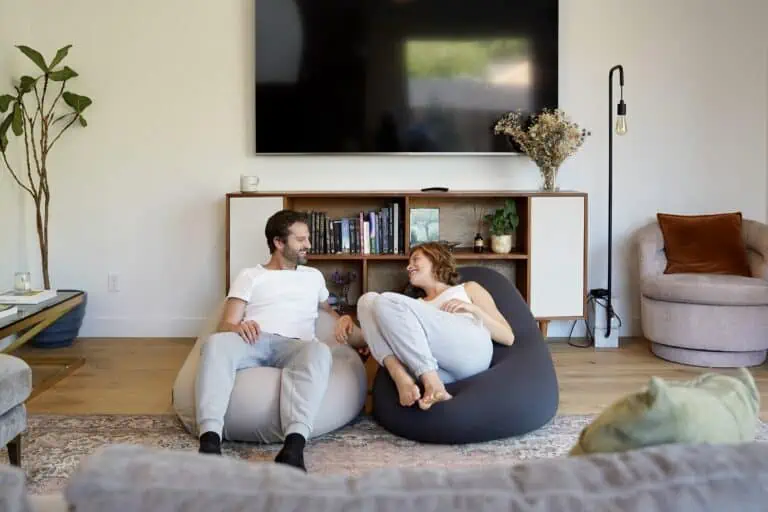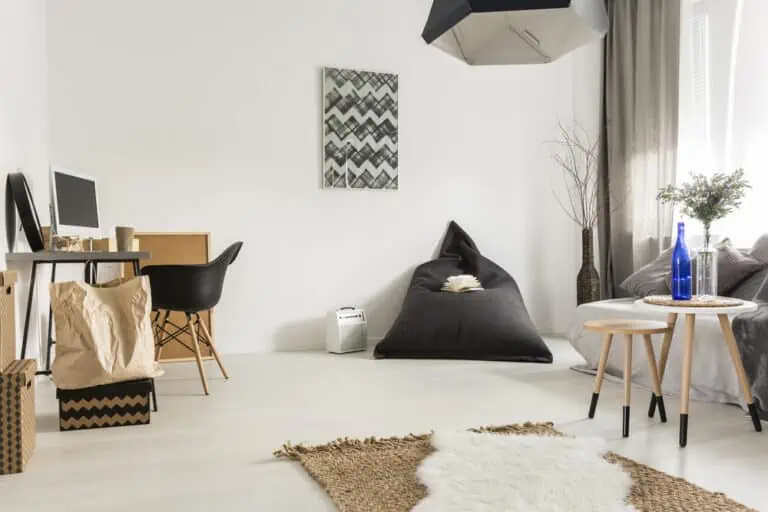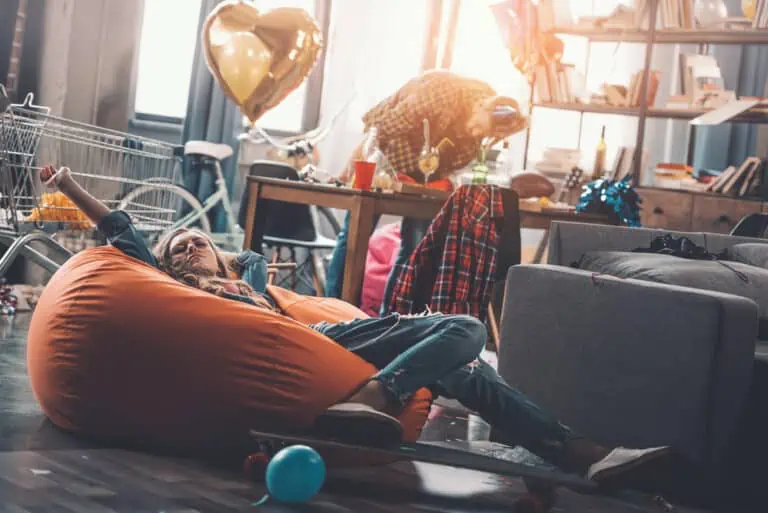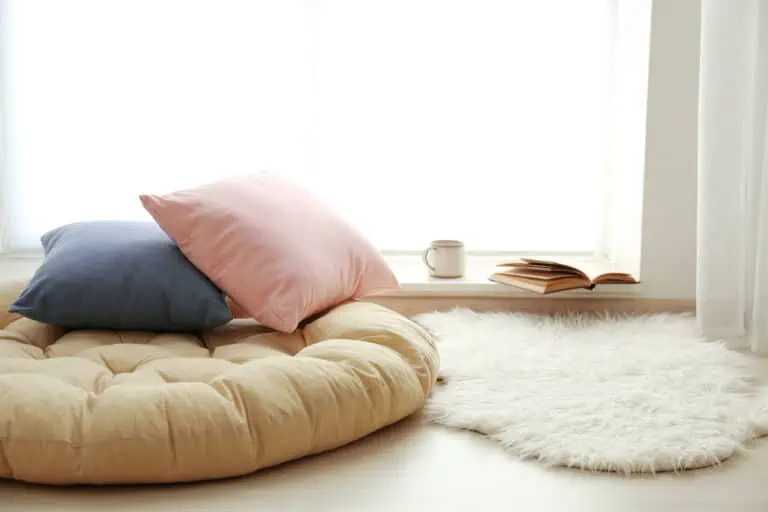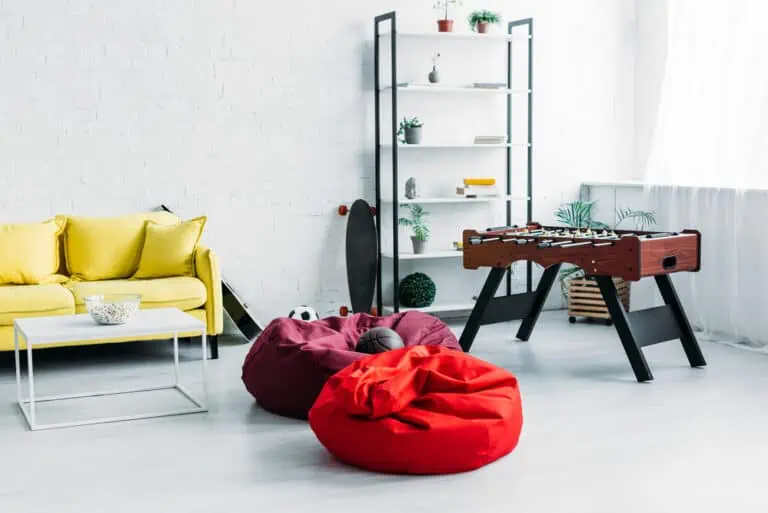Why are Bean Bags So Expensive? (And When You Should Splurge or Save on Them)
Homebody Forever is reader-supported. We may receive a commission if you make a purchase through a link on this post.
When my husband and I moved into a bigger space, we found ourselves with two spare rooms. We turned one into a home office (after working from our kitchen table for years), and I turned the second room into my creative space.
I only wanted to furnish it with a few essentials—a bookshelf, scented candles, cute art, and a comfortable seating corner where I could read, relax, and work when a desk just wasn’t cutting it.
Obviously, I needed a bean bag for the seating corner. And I quickly found out how…not cheap they were.
There are several reasons why bean bags are so expensive. Materials, fillings, and the design all contribute to the price. Bean bags are just like any other furniture item. The more expensive the materials and the more complex the design, the higher the price.
In this article, we’ll cover all the factors that go into making a bean bag and when it’s worth splurging (or saving) for a bean bag.

Materials
Just like items of clothing, the fabric that a manufacturer use can significantly impact their price.
A leather bean bag, for example, is likely to be more expensive than a polyester one. And not all polyesters are created equal, so it’s not uncommon to find bean bags made of similar fabrics at different price points.
When choosing a bean bag, consider how often you plan to use it, what you use it for, and whether you’re likely to spill anything on it or get it dirty often.
If, like me, you work and read from it for long periods of time, you don’t want to go too cheap. But I’m also very clumsy and drink a lot of coffee, so a velvet—while comfy and luxurious—doesn’t really make sense because it would be an absolute pain in the butt to clean (I ended up going with polyester).
My point is, it’s worth investing in bean bags with higher quality, durable materials if you’ll use it often and want it to last.

Filling
In addition to outer materials, the inner filling can also impact the total cost of your bean bags (I say total because sometimes the covers and the fillings are sold separately).
Common types of bean bag filling include polystyrene beads, shredded memory foam, EPP beads. Some people use ‘natural’ fillings like rice, beans, or buckwheat hulls.
Polystyrene beads are the most common filler because they are lightweight, airy, and provide decent support. However, they’re not the most environmentally friendly and are also known to be flammable.
Shredded memory foam is another (and often considered to be) higher-quality option, as it conforms to your body shape and provides excellent support. It also has a longer lifespan compared to polystyrene beads. Unsurprisingly, they tend to be more expensive as a result.
EPP beads (expanded polypropylene beads) are another alternative that offers a good balance between comfort and durability. They are firmer than polystyrene beads and provide better support. EPP beads are also lightweight and recyclable, making them an eco-friendly option.
Natural fillings like rice, beans, or buckwheat hulls are eco-friendly and biodegradable, but those features means that they’re no as durable (and I would imagine not as comfortable) as synthetic fillings. Plus, they can attract pests and be less resistant to moisture.
Again, the right filling will depend on your specific needs. If you prioritize comfort and are willing to spend more, a bean bag filled with shredded memory foam might be your best option. Polystyrene or EPP beads could be more suitable for you if you’re on a tighter budget.
Size
When it comes to bean bags, size does matter. The larger the bean bag, the more materials are needed to create it, ultimately impacting its cost.

Now, this isn’t a hard and fast rule, but on the whole, larger bean bags tend to be more expensive because they require more fabric, filling, and labor to produce. A bigger bean bag also means that you’ll require more fillings, which increases the cost.
Design
Design can also impact the final price of a bean bag. Like clothes and furniture, the more intricate (or custom) the design, the higher the price you’ll probably have to pay. Bean bags with specific patterns or graphics may also have a higher price tag due to licensing fees or copyright considerations.
Ergonomics is another design factor that can impact the final price. Ergonomically designed bean bags can provide better physical support for your body and provide added comfort.
These bean bags typically feature additional padding, contoured shapes, or adjustable support structures.
Investing in an ergonomic bean bag chair is often worth the extra cost since it may provide long-lasting relief from muscle strains or uncomfortable postures.
While ergonomic designs are worth investing in, if you’re looking for a fun and stylish piece of furniture and you don’t need the extra support or functionality, a standard bean bag will do just fine.

So Should You Splurge or Save on Bean Bags?
Now that you know why bean bags can get expensive, you might wonder, should you splurge or save?
As always, the answer is it depends. Here are some situations where it’s okay to opt for a more cost-effective option:
- If you need a bean bag for temporary use, such as at a party or an event.
- If you’re buying it for your kids’ playroom, where it’s likely to be subject to rough use, damage, and spills.
- If you’re working with a tight budget and still want to enjoy the comfort of a bean bag.

On the other hand, there are instances when investing in a more expensive bean bag may be worth your money:
- If you plan on using the bean bag as a primary seating option in your living room or any other space where you need long-lasting durability.
- If you’re looking for maximum comfort and support
- If you have any specific health requirements, like needing proper support for your back.
Note: There are also other options on the market, read our list of bean bag alternatives that can be just as comfy.
At the end of the day, only you can decide whether to save or splurge on a bean bag. And remember, just because it’s right for your friend doesn’t always mean it’s right for you.



